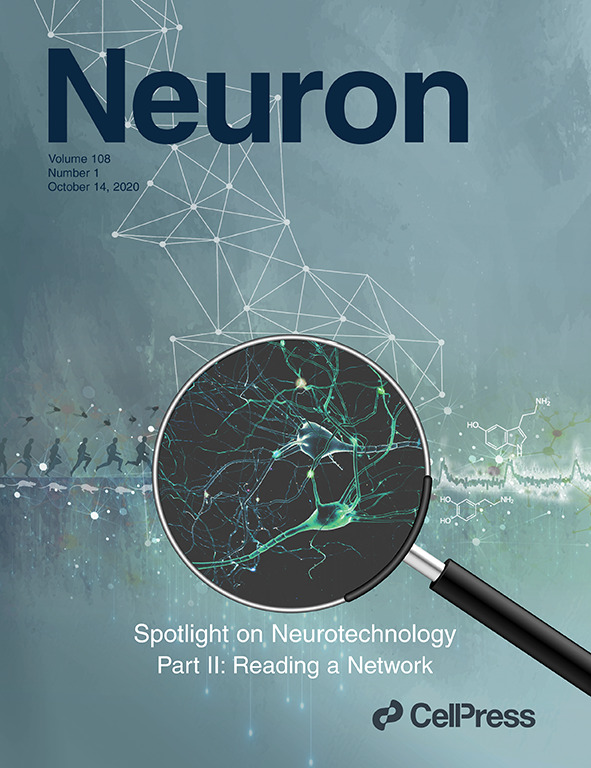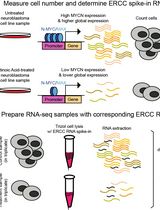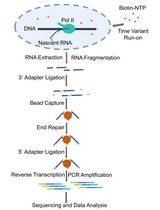- EN - English
- CN - 中文
Isolation of Nuclei from Mouse Dorsal Root Ganglia for Single-nucleus Genomics
小鼠背根神经节细胞核的分离及其单核基因组学研究
发布: 2021年08月05日第11卷第15期 DOI: 10.21769/BioProtoc.4102 浏览次数: 5022
评审: Pascal Fossat Anonymous reviewer(s)

相关实验方案

用于全面分析细胞、细胞外囊泡和血浆 RNA 中编码和非编码 RNA 生物型的 TGIRT-seq 方法
Hengyi Xu [...] Alan M. Lambowitz
2021年12月05日 7145 阅读
Abstract
Primary somatosensory neurons, whose cell bodies reside in the dorsal root ganglion (DRG) and trigeminal ganglion, are specialized to transmit sensory information from the periphery to the central nervous system. Our molecular understanding of peripheral sensory neurons has been limited by both their heterogeneity and low abundance compared with non-neuronal cell types in sensory ganglia. We describe a protocol to isolate nuclei from mouse DRGs using iodixanol density gradient centrifugation, which enriches for neuronal nuclei while still sampling non-neuronal cells such as satellite glia and Schwann cells. This protocol is compatible with a range of downstream applications such as single-nucleus transcriptional and epigenomic assays.
Keywords: Dorsal root ganglion (背根神经节)Background
Gene expression is dynamically regulated in dorsal root ganglion (DRG) cells after peripheral nerve injury, a process important for axonal regeneration and the neuronal hyperexcitability that contributes to neuropathic pain. Previous studies have analyzed gene expression and chromatin structure from bulk DRG tissues (Perkins et al., 2014; Chandran et al., 2016), but their interpretation is complicated by the cellular heterogeneity of the DRG.
Single-cell/single-nucleus genomics has become an important tool for studying molecular features within distinct peripheral sensory neuronal subtypes (Usoskin et al., 2015; Nguyen et al., 2017 and 2019; Zeisel et al., 2018; Sharma et al., 2020). While single-cell transcriptional profiling from sensory ganglia appears to provide greater transcriptional diversity than single-nucleus transcriptional profiling, a key advantage of analyzing nuclei is that it can be applied to both fresh and archived frozen specimens. This offers flexibility in sample preparation and greater access to human samples. Nuclei isolation is also associated with induction of immediate early genes contrary to whole-cell isolation because it is faster, avoids cytoplasmic signaling cascades, and is conducted entirely at 4°C. These features make single-nucleus analyses particularly attractive for studying changes that occur rapidly after a stimulus.
Here, we describe a density gradient centrifugation protocol for purifying nuclei from frozen mouse DRG samples, which is compatible with droplet-based single-nucleus genomic analyses (Renthal et al., 2020). This protocol, which is based on previous protocols for extracting mouse and human CNS nuclei (Mo et al., 2015; Renthal et al., 2018), yields a greater fraction of neuronal nuclei (40-50% neurons as measured by single-nucleus RNA sequencing) as compared with commonly used non-gradient dissociation methods (5-10% neurons) (Habib et al., 2017; Avraham et al., 2020; Slyper et al., 2020), while still sampling a broad range of non-neuronal DRG cell types.
Materials and Reagents
1.5-ml centrifuge tubes (Eppendorf, catalog number: 022431021)
5-ml centrifuge tubes (Eppendorf, catalog number: 0030108310)
50-ml conical centrifuge tubes (Falcon, catalog number: 352098)
Cell strainers, 40-µm (BD Falcon, catalog number: 352340)
Ultracentrifuge tubes (Beckman Coulter, catalog number: 344059)
Laboratory film (Parafilm, catalog number: PM-996)
Freshly dissected or freshly frozen mouse DRG tissue
RNase inhibitor (Promega, catalog number: N2611)
60% Iodixanol solution (Sigma, catalog number: D1556)
IGEPAL CA-630 (Sigma, catalog number: I8896)
Nuclease-free water (Invitrogen, catalog number: 4387936)
35% Bovine Serum Albumin solution (BSA; Sigma, catalog number: A7979-50ML)
Sucrose (Millipore, catalog number: 573113)
KCl (Thermo Fisher Scientific, catalog number: AM9640G)
MgCl2 (Thermo Fisher Scientific, catalog number: AM9530G)
Tricine (Sigma, catalog number: T0377)
KOH (Sigma, catalog number: 221465)
Actinomycin (Sigma Aldrich, catalog number: A9415)
PBS (Thermo Fisher Scientific, catalog number: 10010023)
Trypan Blue (Fisher Scientific, catalog number: 15-250-061)
(Optional) Nuclei buffer (10× genomics, catalog number: PN-2000207)
Stock buffer HB (see Recipes)
Diluent buffer (see Recipes)
Equipment
Ultracentrifuge (Beckman Coulter, model: Optima L-90K)
Ultracentrifuge swinging-bucket rotor (Beckman Coulter, model: SW 41 Ti)
Centrifuge with swinging-bucket rotors (Thermo Scientific, model: 75004261)
7-ml Dounce homogenizer (Thermo Fisher Scientific, model: 06435A)
Tissue-Tearor (Biospec Products Inc., model: 985370-04)
Hemocytometer (Hausser Scientific, 1492)
Procedure
文章信息
版权信息
© 2021 The Authors; exclusive licensee Bio-protocol LLC.
如何引用
Yang, L., Tochitsky, I., Woolf, C. J. and Renthal, W. (2021). Isolation of Nuclei from Mouse Dorsal Root Ganglia for Single-nucleus Genomics. Bio-protocol 11(15): e4102. DOI: 10.21769/BioProtoc.4102.
分类
分子生物学 > RNA > 转录
神经科学 > 基础技术
系统生物学 > 表观基因组学
您对这篇实验方法有问题吗?
在此处发布您的问题,我们将邀请本文作者来回答。同时,我们会将您的问题发布到Bio-protocol Exchange,以便寻求社区成员的帮助。
Share
Bluesky
X
Copy link










